
This is an excerpt from TrendsWatch: Museums as Community Infrastructure. The full report is available as a free PDF download.
“There’s nothing like a jolly good disaster to get people to start doing something.”
—Prince Charles
America’s communities face a multitude of threats in coming decades, including severe storms, cold and heat emergencies, power outages, civil unrest, and resulting disruptions to essential services and supply chains. The systems we’ve created to respond to these emergencies are fragmented and fragile, and often prioritize the protection and repair of privileged communities. It will take a “whole-of-society” approach, integrating for-profit, nonprofit, and government entities, to create a robust and equitable system to prepare for and respond to disasters and take steps to reduce future risk. Many of these risks are driven by climate change, and museums can use their nonpartisan credibility and their communications skills to build consensus on climate policy. Through how they do their work and deploy their resources, museums can be an integral part of a collective approach to minimizing the risk of disasters and aiding their communities when disaster does strike.
The Challenge
Communities have always been at risk from natural and man-made disasters, but we are entering an era in which many of these risks will be radically amplified. Much of this shift is being driven by climate change, which is intensifying temperature extremes, thereby causing flood and drought and making severe weather events more frequent. Heat waves are already the leading cause of weather-related deaths in the US, and extreme heat events could increase substantially by the end of the century. Warmer, drier conditions and a longer fire season are projected to result in a 30 percent increase in the areas burned by lightning-sparked wildfires between 2011 and 2060. Climate change also brings climate instability, with some states experiencing extreme precipitation while others bake in drought. Given the global lack of progress in slowing the climate crisis, climate risk is going to continue to rise in the coming century.
Because climate change is driven by anthropogenic forces, it seems misleading to call flood, storm, and fire “natural,” in contrast to “man-made,” disasters. Be that as it may, the US is experiencing a rise in civil disruptions as well, with 2020 marking record levels of violent mass demonstrations and rioting. Given our country’s level of political polarization, and the fact that a third or more of citizens regardless of political identity believe that violence is justified to achieve political goals, this trend is unlikely to slow or reverse anytime soon.
In fact, the rising risks of climate events and civil violence are intertwined. The damage from climate disasters falls disproportionately on poor communities and communities of color, while federal disaster spending favors the wealthy and white. (Indeed, disasters have been shown to exacerbate wealth inequality.) Cities are notorious heat islands, which in turn contributes to heat-related illness and death. Communities of color experience the highest temperatures because they have fewer public amenities that lower temperatures, such as trees, landscaped medians, and parks, and are less likely to have air conditioning. The correlation between race and temperature is so strong that historic maps of redlined neighborhoods mirror contemporary urban heat maps. These inequities, the social movements they spark, and the backlash against calls for reform add fuel to cultural and political tensions that can lead to violence.
Over the next century, climate change will threaten the very existence of some communities. The residents of Isle de Jean Charles, a largely Native American community in the bayous of Louisiana, were tagged as the “first US climate refugees” when the tribe lost 98 percent of its land to rising sea levels. They will not be the last. Climatologists project that, due to flooding and extreme heat, some major cities, including Miami, New Orleans, and Chicago, may become “unbearable for humans” by 2100. That doesn’t mean humans, being both resilient and stubborn, will abandon their homes, but it does dramatize the level of risk communities face, especially vulnerable communities without sufficient access to protection, relief, or ability to evacuate.
The Response
In Society
In 2020, the US experienced twenty-two separate billion-dollar weather and climate disasters, shattering previous annual records. This roster of destruction included seven disasters linked to tropical cyclones, thirteen linked to severe storms, one linked to drought, and one linked to wildfires. Together, these events inflicted $95 billion in damages. We don’t, and arguably can’t, maintain a large enough cadre of government workers devoted to disaster response to cope with this level of impact. Instead, the US relies on networks of response, using reservoirs of paid and volunteer labor to supplement the standing workforce of emergency responders. The American Red Cross draws on a network of three hundred thousand volunteers to respond to more than sixty thousand disasters every year. In California, which ranks second in the list of states most likely to experience natural disasters, all state employees can be called up and reassigned for emergency response.
Planners increasingly look to systems-level efforts to buffer the risks of climate disasters, integrating protection into the design of neighborhoods and cities. Over time the focus of flood control has expanded from hard engineering (i.e., levees, dams, and reservoirs) to encompass “soft” strategies such as zoning, forestation, and controlled flooding. Cities are setting goals for tree canopy coverage and green space, including parks and gardens, to lower city temperatures. State and local governments are encouraging or mandating xeriscaping (landscaping with plants that need little or no water), even paying residents to rip out their lawns, to adapt to drought. More and more often, mitigation is being seamlessly integrated into urban design, for example, in the form of a skate-park-cum-urban-sculpture in Denver that doubles as a “bioswale” that soaks up stormwater and prevents flooding.

Photo credit: ZeeAnn Mason, Museum of the American Revolution.
The sheer cost, both human and financial, of responding to climate disasters underscores the wisdom of investing in the largest scale of prevention—slowing the pace of climate change and hopefully staving off the worst-case projections. The US recently committed to cutting its greenhouse gas emissions by 50 percent or more (compared to 2005 levels) by 2030, and reaching a net-zero emissions economy no later than 2050. While federal action lagged under the previous administration, state and tribal governments stepped in to take action. Currently fifteen states and territories are implementing plans for a 100 percent clean energy future, and more than fifty tribal climate action plans are in place in North America. Pushed by investors, consumers, employees, activists, and in some cases the courts, a growing number of for-profit companies have pledged to reduce their emissions (though it can be difficult to parse which commitments are real and which are “carbonwashing”). And while focusing on climate-friendly steps individuals can take diverts attention from the critical responsibility of government and industry, it is certainly true that individuals, companies, industry, and government need to be “all-in” together if we are to slow the pace of climate disaster.
Even if our united climate action does succeed in steering us towards the best outcome that is still possible, we need to plan for what we can’t change in the face of escalating natural disasters, up to and including managed retreat from areas that are no longer habitable. States, cities, and communities are making plans for how to adapt to a future of drought, heat, and rising sea levels. Governments and insurance providers are reexamining the policies and subsidies that have masked the risk of living in floodplains and on seaside properties. Many coastal communities are using federal and state funding to raise homes up above flood level, buy out homeowners entirely, or swap public open spaces in the interior for private land on the shore. In the future, more communities may follow the lead of Valmeyer, Illinois, which moved the whole town two miles farther away from the flood risk posed by the Mississippi River. The residents of Valmeyer were overwhelmingly white and well-off. How can we ensure that communities that are less white and less wealthy are able to “manage retreat” as well, while keeping their culture and identities intact?
Equity and Disaster Preparedness
As the country strengthens its disaster response, we also need to reduce inequity and address some of the concerns that underlie social unrest. Some strategies for mustering emergency responders create their own harm. For instance, many states depend on prisoners to supplement their professional firefighting crews, paying them nominal wages and, because Black people are incarcerated in disproportionate numbers, adding to the racial inequity of climate-related risk. (In California, pre-pandemic, inmates made up a third of the wildfire-fighting personnel.) Nationally, we’ve created a perverse system of incentives that lead agencies charged with protecting property and providing relief to maximize their economic impact by prioritizing high-value properties. The Federal Emergency Management Agency’s (FEMA) National Advisory Council has called on the agency to reform programs that favor victims who are wealthy and own property (and are more likely to be white). However, FEMA has yet to implement any of the council’s recommendations.
In Museums
As public-facing organizations, many of which are devoted to the long-term care of heritage, museums are uniquely positioned to help the public in times of emergency. By expanding their attention from inside the organization to the outside world, museums’ disaster response can encompass their community as well. Most museums devote considerable resources to climate control, preadapting them to act as cooling stations for their neighbors during heat emergencies. Many museums in high-risk areas have armored their buildings and property to withstand earthquakes, fire, and flood. Through their own disaster planning, they may have formed connections with local emergency responders. These preparations put them in an excellent position to offer refuge and assistance to their community when disaster strikes— whether that takes the form of opening their galleries and classrooms to provide safe space, serving as a staging area for emergency responders, or helping to distribute relief.
Some museums are, by virtue of their governance, part of a larger network of response, for example, within a university or a state. Others voluntarily integrate themselves into local systems, sharing staff whose knowledge, training, and skills can be adapted to disaster response. Even more step in as need arises, in response to local disasters ranging from fire and flood to tragedies resulting from violence and hate.
A growing number of museums are reshaping their properties to function as part of a larger buffer of protection for their community’s green infrastructure: creating plantings that slow runoff, cache water, and reduce flooding; designing green, cooling areas in urban landscapes; or xeriscaping their grounds to reduce water use. The impact of these efforts is magnified through museum education, showing individuals and other businesses how they can follow suit.
One of the most powerful things museums can do to help society tackle systems-level change is to foster public understanding about climate science and risk. As has been widely recognized at the international level, museums are key sites for climate education, engagement, action, and research. Though climate change has become a highly partisan issue in the US, museums enjoy strong, nonpartisan trust on the part of the American public and can use that trust, together with their skills at communicating science and fostering conversation, to create a common basis for a national consensus on climate policy.
Museum Examples
Responding to Immediate Needs
In the early morning hours of Sunday, February 18, 2018, a four-alarm fire broke out in an apartment building across the street from the newly opened Museum of the American Revolution in Philadelphia. As the blaze escalated, residents and guests from an adjacent hotel evacuated into freezing cold temperatures. At the request of the fire chief, the museum’s operations team opened the museum to dozens of displaced neighbors, offering warmth, restrooms, and water. When it became clear the museum would be closed to the public that day, the catering team provided evacuees with a sumptuous brunch, prepared for a now-cancelled event. In the following weeks, the museum collected donations from visitors eager to provide aid, as well as supplying workspace for emergency personnel and staff of the shuttered hotel.
In February 2021, oscillating pressure patterns in the Arctic created a record-breaking “deep freeze” in Texas and plunged the state into darkness. As the power grid faltered, nearly three million families were left without heat, and as pipes burst, many lacked water as well. In McAllen, the International Museum of Art and Culture quickly turned itself into a daytime warming center, waiving admission for three days and setting up socially distanced stations for people to work, study, and charge their electronic devices. Staff treated visitors to hot cocoa, led tours, and trotted out the museum’s Animal Ambassadors to entertain the children.
Skip over related stories to continue reading articleResilient Design as Part of Community Buffering
Following Hurricane Katrina, the Louisiana Children’s Museum in New Orleans reimagined its mission and purpose to meeting the needs of its recovering community. Its new campus, which opened in 2019, models resilient design and contributes to community flood control. The site includes a lagoon edged with native plantings that can retain up to three feet of water from a storm event, reducing flooding in the surrounding neighborhood. In 2018, the Charles H. Wright Museum of African American History in Detroit partnered with the Michigan Science Center to launch the Ripple of Impact: Museum Stormwater Initiative to manage stormwater diversion in the neighborhood that unites their campuses. Through the use of bioswales, urban garden space, and permeable paving, the project reduces runoff, mitigates flooding, and prevents pollution of the Detroit River.
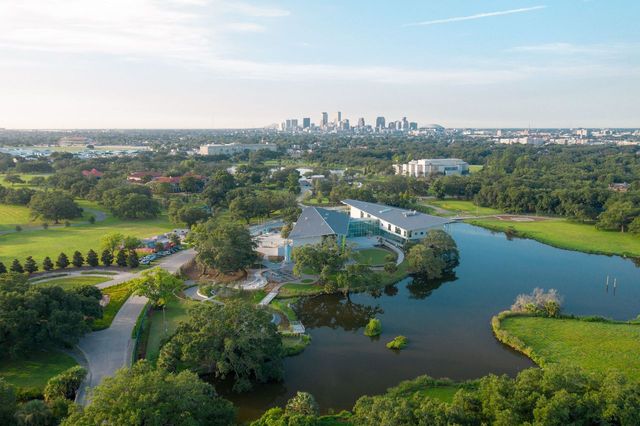
Integrating with Networks of Response
In California, the state government code stipulates that all public employees—including staff of state or county museums—can be called up as disaster service workers in response to “natural, man-made, or war-caused emergencies.” During the COVID-19 pandemic, much of the staff of the San Bernardino County Museum was reassigned to temporary roles in the community, while the museum itself was closed to the public. Their assignments included working at a regional medical center as contact tracers and supporting the November 2020 election as poll workers and drivers.
The Wisconsin Historical Society (WHS) set a voluntary goal of supporting agencies at the forefront of the state’s pandemic response. Together with employees of the Wisconsin Department of Workforce Development and the Department of Health Services, more than fifty WHS staff—including archivists, registrars, curators, cartographers, and librarians—formed a joint COVID Response Team. One staff member applied her logistics skills to helping coordinate the distribution of supplies for testing. The director of one WHS site co-led an Equity in Testing workgroup dedicated to ensuring that Indigenous communities had access to testing and support. WHS’s Cultural Cartographer used his training to build a data model and mapping system to track COVID hotspots for the state.
Public Education
Communities across Florida are at risk from hurricanes from June through November each year, and these storms are growing in frequency and intensity. In 2020, the state experienced a record high of thirty named storms. With a large proportion of the population at risk, it is essential to provide accurate, timely, and trusted information about how to prepare for hurricanes. The Museum of Discovery and Science in Ft. Lauderdale works with the International Hurricane Research Center at Florida International University, Broward County Emergency Management Division, and the City of Fort Lauderdale Domestic Preparedness and Emergency Management Bureau to present an annual “Eye of the Storm” hurricane preparedness program, free to the public. In 2020, during pandemic shutdown, the event went virtual, resulting in a twelve-episode video series available on YouTube, Facebook, and the museum’s own website.
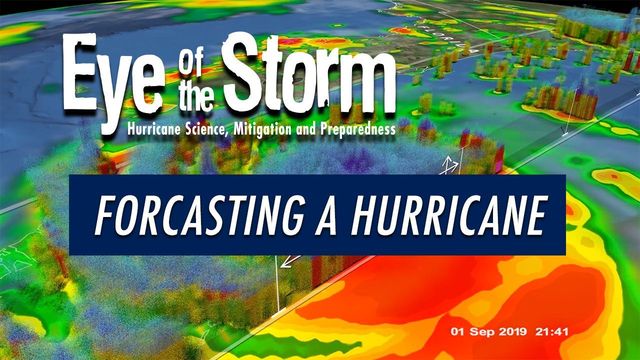
Promoting Long-Term Thinking
From 2009 to 2010, MoMA PS1 in New York City hosted an architects-in-residence program to re-envision the coastlines surrounding New York Harbor, prioritizing “soft” resilient infrastructure to mitigate the risk from sea level rise. In 2010, the Museum of Modern Art presented the resulting designs from five interdisciplinary teams in an associated exhibition, Rising Currents: Projects for New York’s Waterfront. The proposed solutions encompassed building spongelike sidewalks, suspending housing over the water, and turning the Gowanus canal into an oyster hatchery.
In 2016, Catalyzing Newport, guided by cultural organizations including the Newport Art Museum, Rhode Island Historical Society, the International Tennis Hall of Fame, and the Preservation Society of Newport County, commissioned Mayor’s Office 2061, a pop-up installation imagining what it might be like to live and work in Newport, Rhode Island, in the future. Working from a scenario written by futurist Jake Dunagan, designers worked with local museum staff, artists, and students to help the public envision the effects of rising sea levels on their community.
Explore the Future
Signal of Change:
A “signal of change” is a recent news story, report, or event describing a local innovation or disruption that has the potential to grow in scope and scale. Use this signal to catalyze your thinking about how museums might play a role in a whole-of-society approach to mitigating risk for their communities.
Phoenix establishes ‘heat office’
Santa Fe New Mexican, November 13, 2021
David Hondula recently got a job he never dreamed of—director of Phoenix’s Office of Heat Response and Mitigation, the first publicly funded municipal office of its kind. Heat is the No. 1 weather-related killer in the US, killing an average of 138 people a year from 1990 to 2019, and in 2020, heat killed 313 people in Arizona alone. Phoenix has committed to stopping that trend. The City Council in May approved a budget that included $2.8 million focused on climate change and heat readiness. Hondula’s staff of four will collaborate with other city departments, such as Parks and Recreation and Street Transportation. One project will focus on increasing the tree canopy throughout Phoenix, with a goal of reaching 25 percent tree canopy cover in the city by 2030. Another will focus on built infrastructure—increasing shade structures and developing ways to cool structures and streets, particularly at night. Miami-Dade County (Florida); Athens, Greece; and Freetown, Sierra Leone, are the only other places with city officials in charge of managing heat. In Miami-Dade County, the position is funded by the Extreme Heat Resilience Alliance, which aims to reduce extreme heat risk for the most vulnerable populations.
Explore the implications of this signal:
Ask yourself, what if it became common for cities or regions to have dedicated departments tasked with creating an integrated response to heat risk? Or, more broadly, for city or state officials to work with a variety of government agencies and for-profit and nonprofit organizations to mitigate the impacts of climate stress? Discuss three potential implications of this signal:
- For yourself, your family, or friends
- For your museum
- For the United States
Critical Questions for Museums
- How can museums prepare themselves for an era of rising risk?
- How can museums, having secured their own safety in the face of these threats, extend this protection to their community, particularly groups that are neglected by current systems of disaster management?
- How can museums combat climate change and reduce its effect as a threat multiplier before, during, and after disasters?
- How can museums weave themselves into an integrated network of resilience and response?
- What role can museums play in helping their communities understand the changing landscape of risk and create long-term
A Framework for Action
Inward Action
To incorporate community risk mitigation and disaster response into their internal planning, museums can:
- Identify existing assessments of local climate risk, or if there are none, advocate for their development.
- Create risk management and disaster response relationships before the next disaster strikes and maintain them between crises.
- Incorporate design elements into renovations or master planning that help the museum’s property buffer the community against risks such as flood, heat, and fire.
- Include community needs in disaster planning and emergency response plans.
- Create policies and procedures for deploying staff as needed (at the level of community, city, or state) as part of larger relief and response efforts.
Outward Action
To become a formal part of our infrastructure of disaster response, museums can:
- Integrate the museum into a larger network of responders, for example by connecting with local and state emergency managers to incorporate the museum and its resources into government or agency response plans.
- Identify the biggest risks to the museum’s community and assess how the museum can help with mitigation and relief. In particular, consider how the museum might make disaster preparedness and response more equitable by addressing the needs of communities marginalized by current systems.
- Create and disseminate educational materials that raise public awareness of risk and train people on how to prepare for disasters.
- Help community leaders and residents engage in long-term thinking about how they will respond to a changing landscape of risk. Collaborate with city planners, architects, artists, scientists, and policymakers to create scenarios, bring them to life via design charrettes and exhibits, and invite the public to use these designs to help envision the future they want to build for their community.
Additional Resources
- The National Association of Counties’ Resilient Counties Initiative strengthens the ability of local government to prepare for and recover from hurricanes, wildfires, economic collapse, and other disasters, natural or man-made. Its reports and toolkits include resources on public health, flood protection, national data on county emergency management, and use of technology in managing disasters.
- The Role of Culture in Climate Resilient Development (United Cities and Local Governments, 2021). This report documents the initiatives of cities and local or regional governments from all continents on cultural policies, sustainable cities, and climate resilient development. It includes a diverse pack of case studies from across the world and addressing the whole set of the 2030 Agenda Sustainable Development Goals.
- The Environmental Protection Agency’s Climate Change Adaptation Resource Center (ARC-X) is an interactive resource to help local governments create integrated information packages tailored to their local needs: risks, adaptation strategies, and case studies. Users of the site can tailor their search for information by region, and by area of interest (air, water, waste, public health, or adaptation planning).


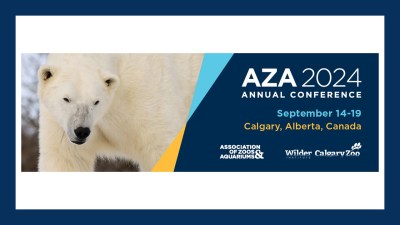
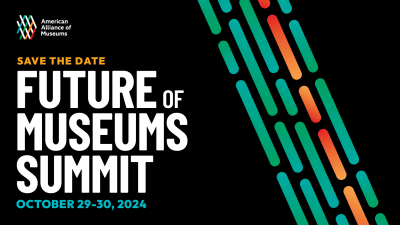
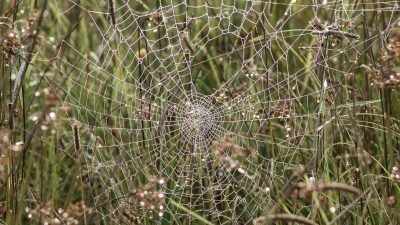
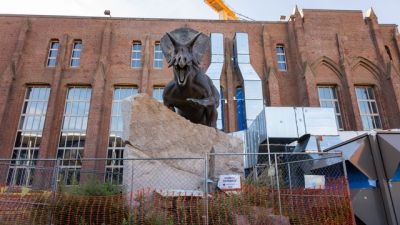


This is an amazing article. I am in awe of the excellent work museum professionals are doing to proactively involve their institutions in community welfare. It makes me ask why aren’t malls and churches and universities and basically all the other corporate citizens of our communities planning to do their parts coordinating their resources to reduce human misery. Sharing the burden would be a compelling story for both for-profit and non-profit entities, and would enhance the value proposition of these institutions for many customers, donors and shareholders as well.